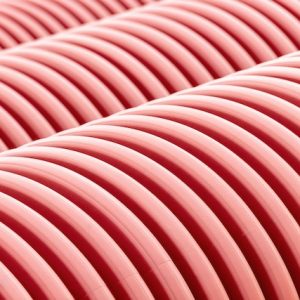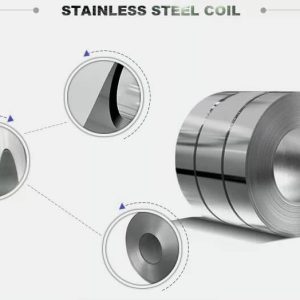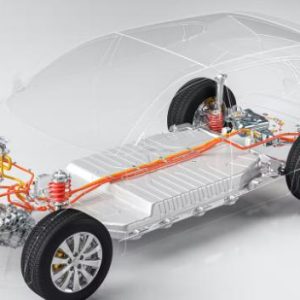Shot blasting steel uses small steel balls—called shot—to clean and prep the surface. By blasting shot at high speed, you can strip away rust, dirt, and old coatings from steel.
This leaves a rough, clean texture that helps new coatings stick and just makes the steel look and perform better. It’s a surprisingly satisfying process to watch, honestly.
You can do shot blasting with different machines. Some are fully automatic, and there’s even wet shot blasting if you want to keep dust down.
If you use shot blasting the right way, you’ll cut down on manual labor and get the steel ready for whatever comes next—like painting or galvanizing. It’s safer and faster, too.
Essential Steps to Shot Blast Steel
Shot blasting steel isn’t just about pointing a nozzle and going for it. You’ve got to prep the steel, pick your materials, set up the equipment, and handle the blasting with care.
Every step matters for the end result.
Preparing the Steel Surface
First off, make sure the steel’s clean and dry. Dirt, oil, or rust just get in the way.
Look for loose paint, scale, or anything else that could mess things up. If the steel’s got heavy rust or thick coatings, you might need to hit it with a wire brush or even some chemicals first.
Pre-cleaning helps the blasting media actually reach the metal. And don’t forget to clamp or secure the steel so it doesn’t move around while you’re working.
Selecting the Appropriate Shot Blasting Media
Picking the right blasting media is huge. Most folks go with steel shot, steel grit, or sometimes abrasive minerals like aluminum oxide.
The size and hardness of your shot should match the steel’s condition and whatever finish you want. Steel shot works well for removing rust and scale without chewing up the steel itself.
Steel grit is sharper and better for deeper cleaning or when you need to rough up the surface more. Media size makes a difference, too—coarser stuff cleans faster but leaves a rougher finish, while finer media takes longer but gives you a smoother result.
Adjusting Equipment Settings
The equipment settings really depend on your media, the size of the steel, and its condition. Blast pressure, nozzle type, and blast angle all come into play.
If you crank up the pressure, you’ll clean tougher spots faster—but you might damage thinner steel. Lower pressure is gentler but slower.
Nozzle size and shape affect how the media spreads out. A wider angle covers more area but isn’t as intense. You’ve got to find a balance between speed, coverage, and protecting your steel.
Always check that the machine’s recovery system is actually recycling the media. It saves money and keeps things running smoothly.
Performing the Shot Blasting Process
When you’re blasting, keep the nozzle moving steadily and evenly across the steel. The distance and speed you use really show up in the results.
If you get too close or move too slowly, you’ll pit the steel or leave it uneven. Too far away or too fast, and you’ll miss spots. It’s all about steady hands and patience.
Keep an eye on the media, too. Once it’s worn out or broken, swap it out so you’re not wasting your time.
Check the steel surface regularly while you work. If you see spots that need more attention, adjust your speed or pressure on the fly.
Best Practices and Safety Considerations
Shot blasting can get dangerous fast if you’re not careful. Paying attention to safety gear, equipment care, and the environment keeps things running smoothly and keeps everyone safe.
Personal Protective Equipment
Always suit up with the right gear. You’ll want a full-face shield or solid safety goggles—there’s no sense risking your eyes with all that flying shot and dust.
The machines get loud, so hearing protection is a must. Gloves and heavy clothes help protect your skin from getting scraped or cut up.
Steel-toed boots are honestly non-negotiable. And if you’re dealing with dust, throw on a respirator or at least a decent mask.
Maintenance of Shot Blasting Equipment
Keep your gear in shape with regular checks. Look over your machine every day for worn parts, leaks, or anything blocking things up.
Swap out old steel shot when it’s worn down—it keeps the process effective and protects your workpiece. Lubricate moving parts to avoid breakdowns.
Don’t forget to clean out vacuum systems often. It’s a pain, but it stops buildup and those annoying surprise shutdowns. Good maintenance can really cut down on the crew you need, too.
Environmental Precautions
Shot blasting kicks up dust and debris, so you’ve got to keep it under control to protect both the workplace and the environment. Heavy-duty vacuum systems do a solid job of capturing steel shot and dust right where it starts.
Dust collection systems cut down on airborne particles, making the air safer to breathe and helping workers stay healthier. Always toss waste according to local environmental rules—no shortcuts here.
A clean blasting area means fewer slip hazards, and you won’t track contamination all over the facility. Good ventilation matters too; it keeps the air safer for everyone.




